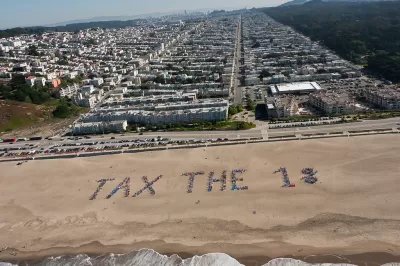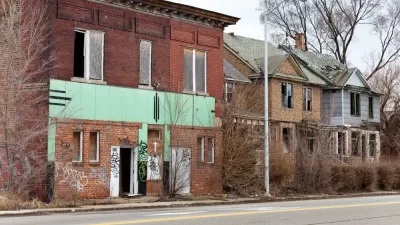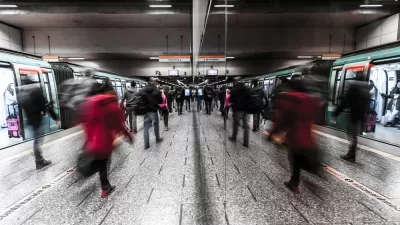While the vast majority of cities saw an increase—or no decrease—in neighborhood inequality since 1990, nearly 30 regions became more equal. But paper equality can be problematic when the rich simply up and left town.

The Urban Institute's Rolf Pendall discusses results from his recent study of neighborhood inequality rates between 1990 and 2010. As one might guess, most regions fared poorly. "But there are exceptions to every rule: in 29 of the nation's 214 commuting zones (CZs) with over 250,000 residents, neighborhood inequality went down from 1990 to 2010."
However, only in some areas did incomes actually rise across the board. "In 21 CZs, inequality fell because of shared growth, with income rising significantly in both top and bottom neighborhoods. [...] In eight CZs, inequality dropped because economic restructuring undermined the regional economies to such an extent that middle- and upper-income households either left town, retired, or took pay cuts."
Self-segregation by the rich results in segregated poverty, and, perversely, regional equality. Pendall says we need more diverse metrics to evaluate economic outcomes. He asks, "Do places and nations prevent or reduce material hardship? Do they foster economic mobility over the life course and generations? Do they assure the economic security of people who are just getting by and resilience for those whose lives are disrupted?"
FULL STORY: Is falling inequality always a good thing?

Planetizen Federal Action Tracker
A weekly monitor of how Trump’s orders and actions are impacting planners and planning in America.

San Francisco's School District Spent $105M To Build Affordable Housing for Teachers — And That's Just the Beginning
SFUSD joins a growing list of school districts using their land holdings to address housing affordability challenges faced by their own employees.

The Tiny, Adorable $7,000 Car Turning Japan Onto EVs
The single seat Mibot charges from a regular plug as quickly as an iPad, and is about half the price of an average EV.

With Protected Lanes, 460% More People Commute by Bike
For those needing more ammo, more data proving what we already knew is here.

In More Metros Than You’d Think, Suburbs are Now More Expensive Than the City
If you're moving to the burbs to save on square footage, data shows you should think again.

The States Losing Rural Delivery Rooms at an Alarming Pace
In some states, as few as 9% of rural hospitals still deliver babies. As a result, rising pre-term births, no adequate pre-term care and "harrowing" close calls are a growing reality.
Urban Design for Planners 1: Software Tools
This six-course series explores essential urban design concepts using open source software and equips planners with the tools they need to participate fully in the urban design process.
Planning for Universal Design
Learn the tools for implementing Universal Design in planning regulations.
Smith Gee Studio
City of Charlotte
City of Camden Redevelopment Agency
City of Astoria
Transportation Research & Education Center (TREC) at Portland State University
US High Speed Rail Association
City of Camden Redevelopment Agency
Municipality of Princeton (NJ)




























